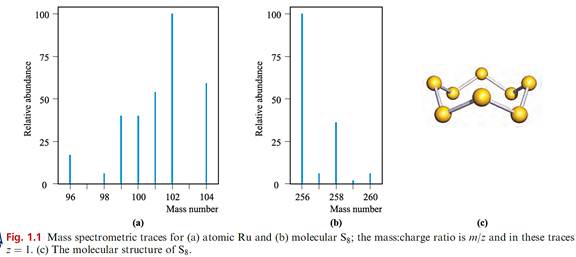


 علم الكيمياء
علم الكيمياء 
 الكيمياء التحليلية
الكيمياء التحليلية 
 الكيمياء الحياتية
الكيمياء الحياتية 
 الكيمياء العضوية
الكيمياء العضوية 
 الكيمياء الفيزيائية
الكيمياء الفيزيائية
 الكيمياء اللاعضوية
الكيمياء اللاعضوية 
 مواضيع اخرى في الكيمياء
مواضيع اخرى في الكيمياء
 الكيمياء الصناعية
الكيمياء الصناعية |
Read More
Date: 21-1-2018
Date: 6-7-2017
Date: 20-3-2017
|
Successes in early quantum theory
We saw in Section 1.2 that electrons in an atom occupy a region of space around the nucleus. The importance of electrons in determining the properties of atoms, ions and molecules, including the bonding between or within them, means that we must have an understanding of the electronic structures of each species. No adequate discussion of electronic structure is possible without reference to quantum theory and wave mechanics. In this and the next few sections, we review some of the crucial concepts. The treatment is mainly qualitative, and for greater detail and more rigorous derivations of mathematical relationships. The development of quantum theory took place in two stages. In the older theories (1900–1925), the electron was treated as a particle, and the achievements of greatest significance to inorganic chemistry were the interpretation of atomic spectra and assignment of electronic configurations. In more recent models, the electron is treated as a wave (hence the name wave mechanics) and the main successes in chemistry are the elucidation of the basis of stereochemistry and methods for calculating the properties of molecules (exact only for species involving light atoms). Since all the results obtained by using the older quantum theory may also be obtained from wave mechanics, it may seem unnecessary to refer to the former; indeed, sophisticated treatments of theoretical chemistry seldom do. However, most chemists often find it easier and more convenient to consider the electron as a particle rather than a wave.





|
|
|
|
دخلت غرفة فنسيت ماذا تريد من داخلها.. خبير يفسر الحالة
|
|
|
|
|
|
|
ثورة طبية.. ابتكار أصغر جهاز لتنظيم ضربات القلب في العالم
|
|
|
|
|
|
|
العتبة العباسية المقدسة تستعد لإطلاق الحفل المركزي لتخرج طلبة الجامعات العراقية
|
|
|